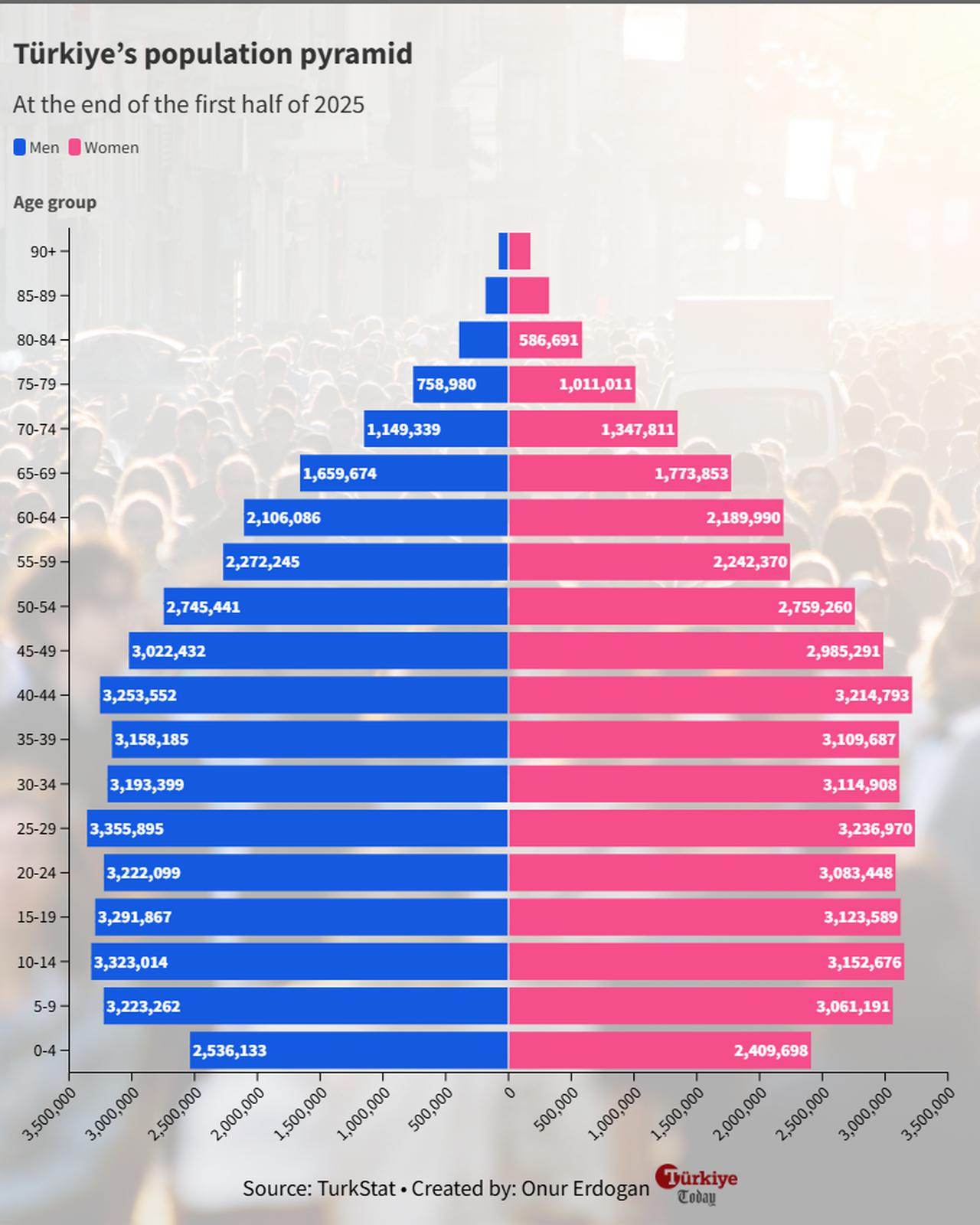
Türkiye’s population rose to 85.82 million in the first half of 2025, increasing by only 90,456 since the start of the year, amid growing concerns over declining fertility rates, the Turkish Statistical Institute reported.
The population rose by 243,588 compared with the same period in 2024, but declines were recorded among children and youth, while the number of elderly continued to increase, indicating that Türkiye’s population is aging.
According to the figures, men made up 42.92 million (50.01%) of the total, while women accounted for 42.90 million (49.99%), showing an almost even gender distribution.
The youth population, defined as those aged 15 to 24, fell to 12.72 million by June, a decrease of 42,156 since the end of 2024 and 110,077 compared with a year earlier. Since 2021, the number of young people has declined by more than 250,000.
Children aged 0 to 4 dropped below 5 million for the first time, with the group totaling 4.95 million.
This marks a fall of 136,555 since late 2024 and 277,384 year-on-year. Since 2018, the number of children in this group has decreased by over 1.53 million.

The working-age group, defined as those aged 15 to 64, widened by 55,426 since the start of the year and posted a year-on-year increase of 214,544. In total, Türkiye’s working-age population reached 58.68 million.
However, Türkiye’s broad-term unemployment figures, which include the population not participating in the workforce, rose to an all-time high of 11.65 million as of July, while total employment stood at 32.45 million.
The population aged 65 and over increased by 519,188 year-on-year and 325,075 during the first half of 2025, bringing the total close to 9.5 million.
The dependent population, which refers to those aged 0 to 15 and 65 and over who do not contribute to productivity, grew by 92,075 year-on-year. As a result, Türkiye’s dependency rate—calculated by dividing the number of dependent individuals by the working-age population—stands at 46%, though it remains below the world average of 55%.
Looking at Türkiye’s population pyramid, which shows the number of citizens in each age group, the lower bars representing the young population have narrowed, particularly in the 0–24 age range, which is often observed in emerging economies.

According to TurkStat, Türkiye’s total fertility rate, which measures the average number of children a woman is expected to give birth to, dropped to 1.48 from 1.51 the previous year.
The figure is far below the replacement level of 2.1, placing Türkiye’s population at risk of long-term decline.
TurkStat projects the population to reach 88.4 million by 2030 and 92.3 million by 2040. Growth is expected to continue until 2050, when the population is forecast to peak at 93.5 million.
However, according to the same projections, Türkiye’s population could shrink to below 77 million by 2100.
To address declining population growth, President Recep Tayyip Erdogan declared 2025 the “Family Year,” with the government introducing new social policies and incentives to encourage families and young people to have children.
These measures include interest-free loans of up to ₺150,000 ($3,673) for young couples preparing to marry, repayable over 48 months with no payments required during the first two years.
The government has also introduced new programs to expand remote work opportunities for women, aiming to increase the participation of housewives in the workforce.